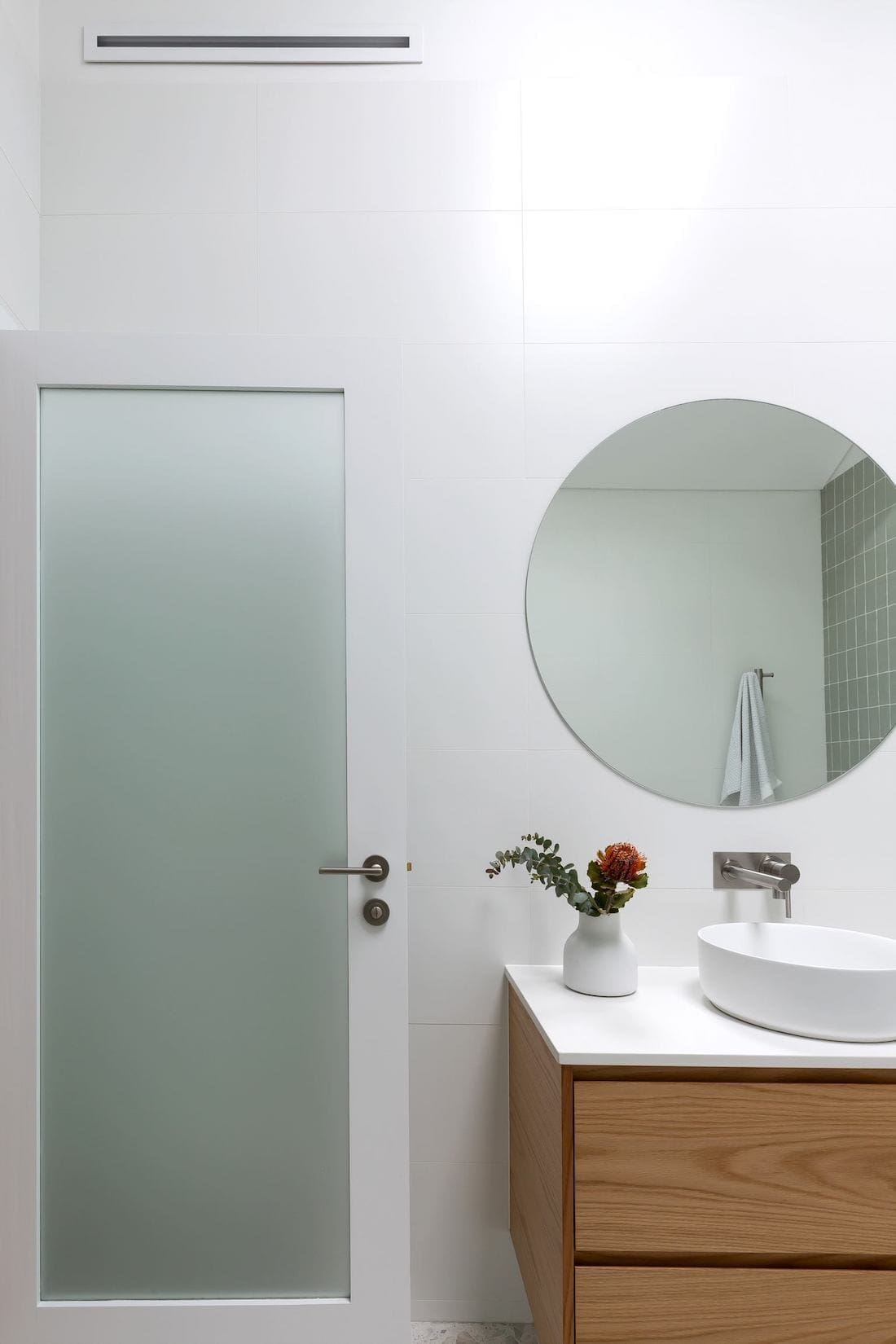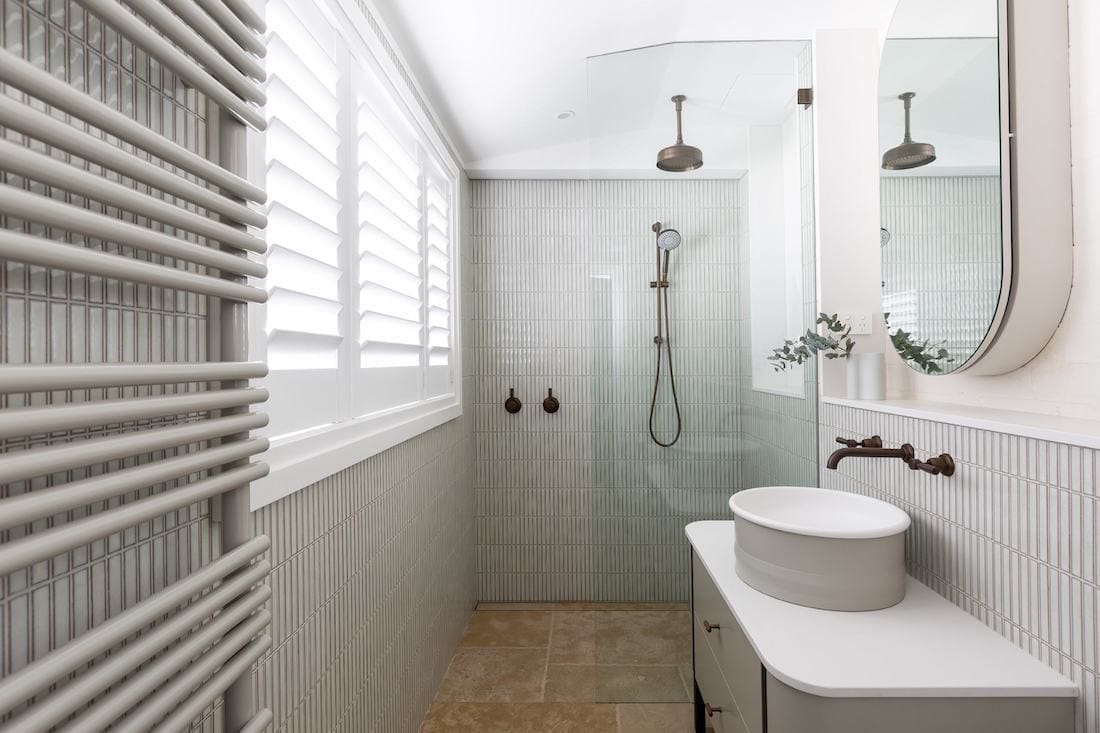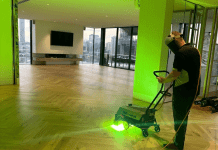Supported by Expella
Bathroom ventilation is not the most glamorous part of a renovation, but it is important to prevent moisture build up, which can lead to a whole host of problems like mould, mildew and bacteria growth. Planning is key to creating a well-ventilated space that doesn’t become a design eye-sore. It’s a topic we don’t hear much about but a well-ventilated bathroom ensures a healthier, more comfortable space… and can avoid costly repairs down the track! So we were eager learn how to ventilate a bathroom. Here to share his expert advice is Wes Quick, Director at Expella, an Australian company at the forefront of air movement technology.
Related article: Everything you need to know about lighting your bathroom
Related article: How to select the right tapware for your design

1. Install an exhaust fan
The first and most common way to ventilate your bathroom is with an exhaust fan. With the flick of a switch, excess moisture is quickly vented outside. There are plenty of exhaust fan options on the market to suit your needs and overall design direction.
Bathroom exhaust fan options, include:
- ceiling exhaust fans
- wall exhaust fans
- inline exhaust fans (allowing choice and flexibility of internal grilles, such as shadowline)
- exhaust fans integrated into a tastic.
In contemporary bathroom design, there’s a move towards seamless ceilings i.e. keeping them clear of bulky tastics or other obstructions. This has seen discreet wall exhaust fans and shadowline exhaust fans gain popularity.
Wes wisely advises the importance of balancing aesthetics with functionality, “It’s important to look for high quality exhaust fans. Our most popular exhaust fans have a Swiss motor. This makes them well-balanced, powerful and quiet. They also have an incredibly low failure rate of less than 0.001%.”
While it’s easy to compare the costs of various bathroom exhaust fans, Wes also encourages you to consider hidden installation costs. “At Expella, we focus on exhaust products that can be easily installed, potentially saving you hours of trade installation costs,” explains Wes.

2. Make use of windows and doors
If you’re lucky enough to have a window in your bathroom — open it! Opening your window lets out steam and prevents moisture build up.
It’s a good idea to open the window while bathing and showering if weather and privacy permits. Otherwise, opening the window and door fully afterwards for at least 15 minutes will make a significant difference .
3. Consider installing a humidity sensor
An exhaust fan is only effective if it’s used and we’re definitely guilty of not turning ours on… who doesn’t love that steam room experience?!
While it can feel great to have a steamy hot shower, that build-up of moisture can absorb into walls causing paint to lift — or worse, mould to develop.
A fuss-free, easy solution is to install a ceiling mounted humidity sensor. It will detect humid air and automatically activate your exhaust fan. “A humidity sensor clears the air before moisture starts causing problems,” explains Wes.

4. Consider an odourless toilet
There’s more to ventilate in a bathroom than just moisture. Although it’s not the sexiest topic, toilet smells are a part of life… but they needn’t be!
Expella has developed a range of award-winning odourless toilets called Milu Odourless Toilets. Using innovative design, they install a fan into the toilet to expel odours before they enter your bathroom.
“We wanted to resolve an age-old problem and so blended design and technology to create our range of odourless toilets,” says Wes.
“The toilets look just like any regular toilet and we have a range of designs, including back-to-wall, in-wall and wall-hung.
“There are many ways to activate the fan. The most popular option is to have the fan come on when the bathroom light is turned on. Alternatively, you can have a dedicated manual switch or a motion sensor which sits in the ceiling just above the toilet.
“These toilets aren’t just for new bathrooms. You can replace your current toilet with an odourless toilet and I recently did this in my bathroom at home.
“Call me bias but I think these should become a standard in toilets as I don’t know anyone who likes the smell,” laughs Wes.
5. Consider your ventilation airflow in the design stage
A bathroom exhaust fan is great… but only if the overall airflow has been considered.
“The first step is to ensure there’s adequate make up air such as a gap under the door,” explains Wes. “As an exhaust fan needs to replace the air it extracts from somewhere, otherwise it won’t work effectively.”
He also advises to consider the position of the exhaust fan.
“The idea is to have the grill or fan as close to the shower as possible while the make up air source is as far away from the fan as possible.”
Wes warns that if the exhaust fan is too close to the make up air source, it will create a short airflow cycle limiting its effectiveness.

6. Install underfloor heating
“Underfloor heating helps to dry a space out really quickly and just makes it so much more comfortable,” says Wes wisely.
“By reducing moisture quickly, it helps to mitigate the development of mould.”
7. Embrace heated towel rails
Similarly, Wes also advocates for heated towel rails in a bathroom.
“They prevent damp towels from lingering and dries them quickly. It stops that musty smell.”

8. Use the best wall insulation possible
Finally, Wes says good wall insulation is a must to minimise condensation.
“Condensation is surface moisture that can lead to issues like mould. The two major factors that can reduce condensation are airflow and heat. So generally speaking, the colder the walls, the more condensation will happen. This is why good wall insulation is so important.”
Have these tips on how to ventilate a bathroom helped you? We learned loads from our chat with Wes and hope you did too. If you’re interested in finding out more about their leading range of ventilation products — and that award winning odourless toilet — check out the Expella website.
More bathroom tips







